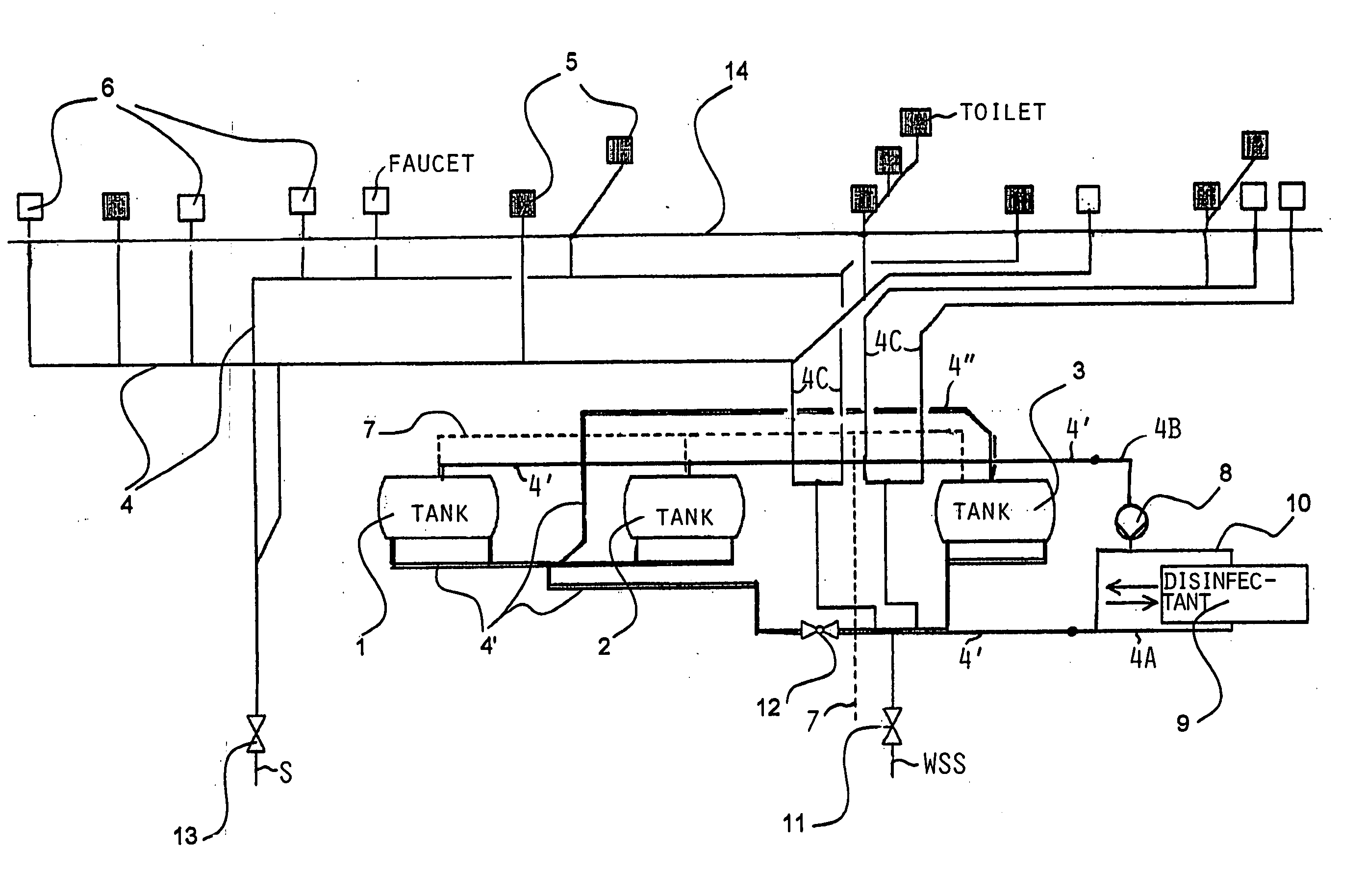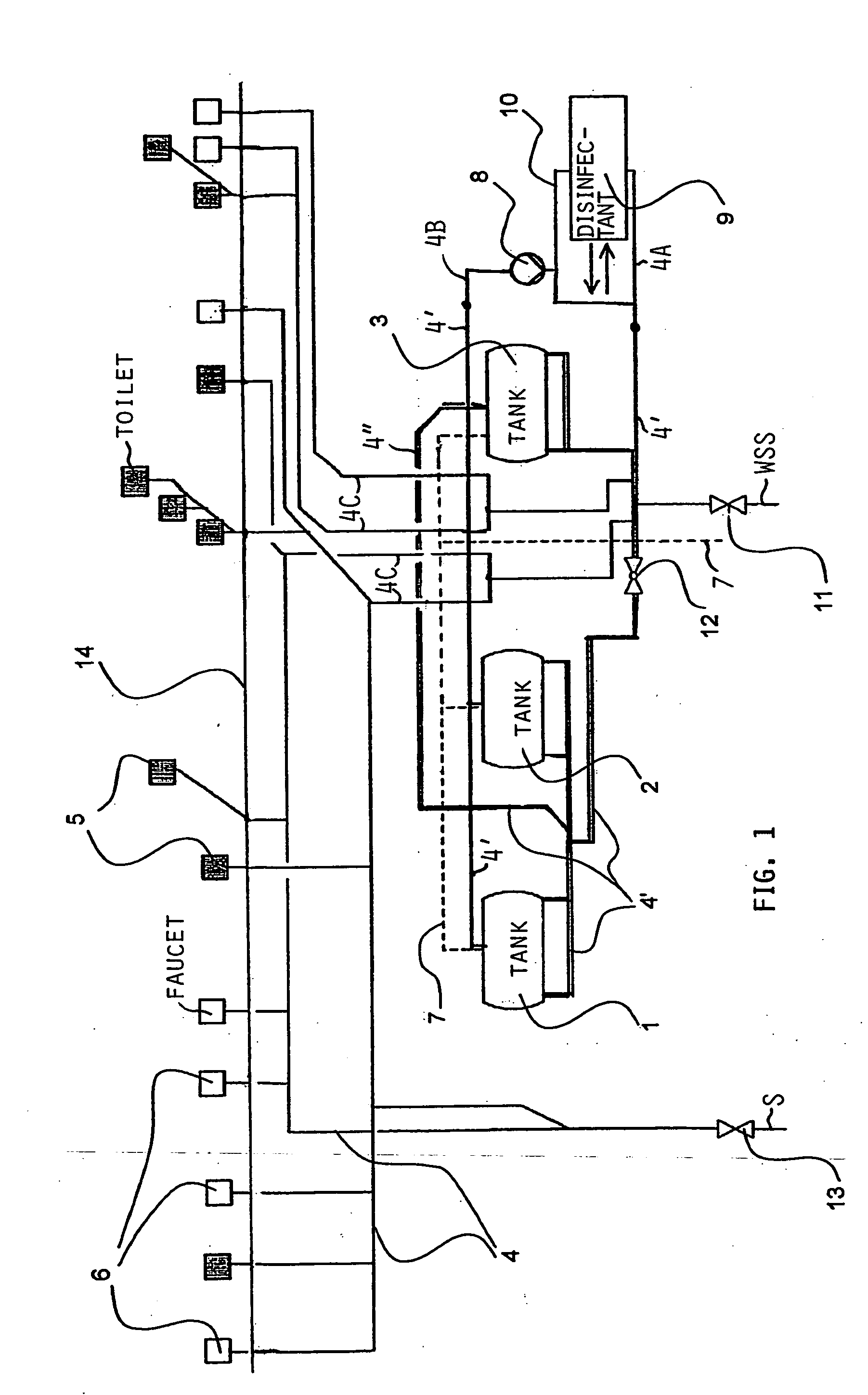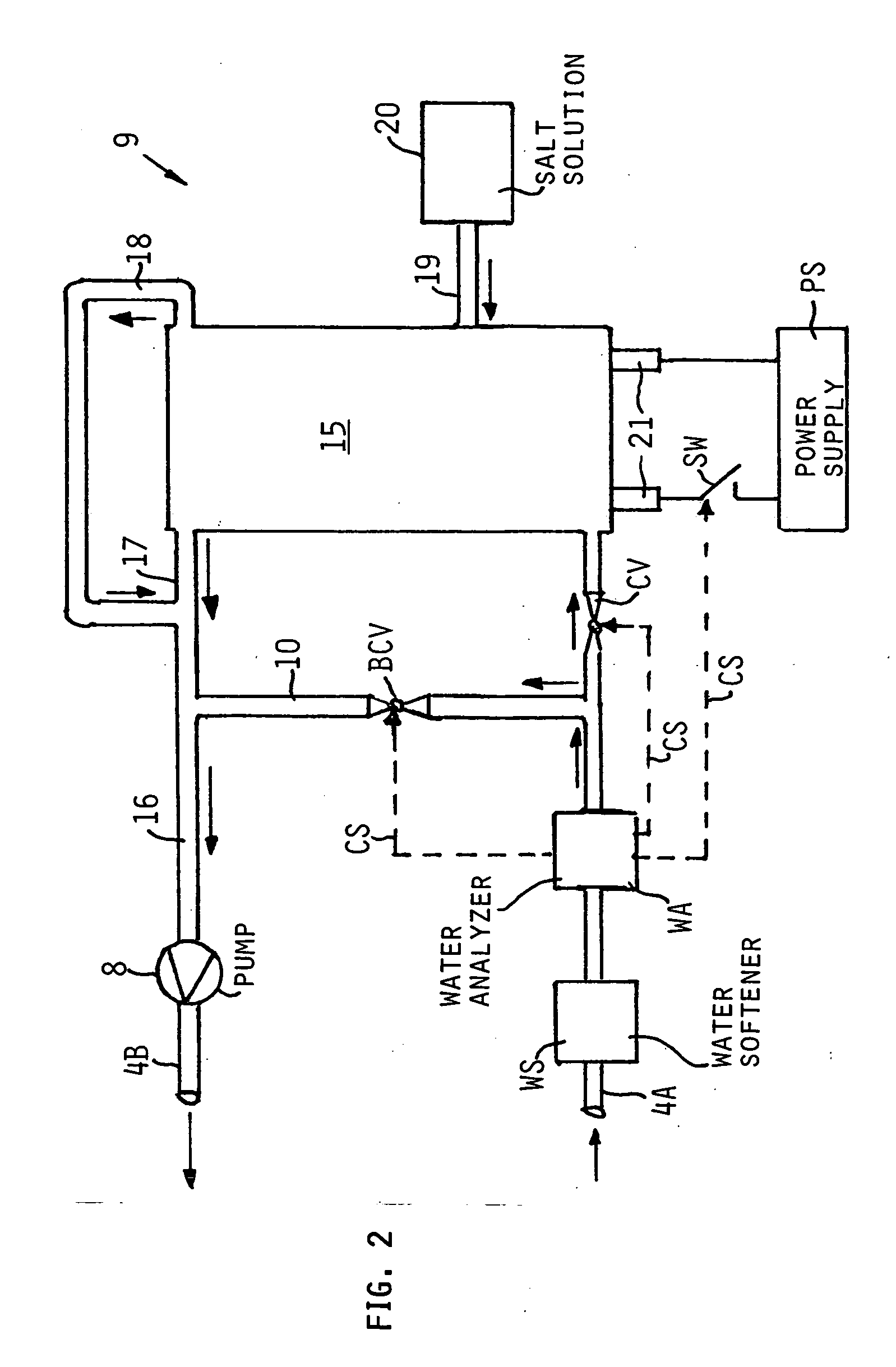Water supply system for an aircraft
a water supply system and aircraft technology, applied in water/sludge/sewage treatment, scale removal and water softening, toilet fittings, etc., can solve the problems of contaminated fresh water, refilled water may also be contaminated, and filters cannot eliminate bacteria present in the system
- Summary
- Abstract
- Description
- Claims
- Application Information
AI Technical Summary
Benefits of technology
Problems solved by technology
Method used
Image
Examples
Embodiment Construction
[0030] The water flow diagram of FIG. 1 shows a water supply piping or plumbing system for a passenger aircraft, particularly of the jumbo type. The plumbing system comprises preferably a plurality of water storage tanks 1, 2, 3 connected by fresh water supply pipes 4 to water use components such as toilets 5, faucets 6, and the like. Additionally, all tanks 1, 2, 3 are connected in parallel to each other by water circulating pipelines 4′. A venting and overflow line 7 connects all tanks to the atmosphere outside an aircraft body not shown. A valve 11 permits filling the tanks or any tank 1, 2, 3 simultaneously from a water supply source WSS, not shown in detail, when the valve 11 is opened. Valve 11 also permits draining the system to the outside. A valve 12 is normally open when all three tanks are to be filled simultaneously. However, if the valve 12 is closed, tank 3 will be filled first. A pipeline 4″ then permits filling tanks 1 and 2 when tank 3 reaches a filling level below ...
PUM
 Login to View More
Login to View More Abstract
Description
Claims
Application Information
 Login to View More
Login to View More - R&D
- Intellectual Property
- Life Sciences
- Materials
- Tech Scout
- Unparalleled Data Quality
- Higher Quality Content
- 60% Fewer Hallucinations
Browse by: Latest US Patents, China's latest patents, Technical Efficacy Thesaurus, Application Domain, Technology Topic, Popular Technical Reports.
© 2025 PatSnap. All rights reserved.Legal|Privacy policy|Modern Slavery Act Transparency Statement|Sitemap|About US| Contact US: help@patsnap.com



